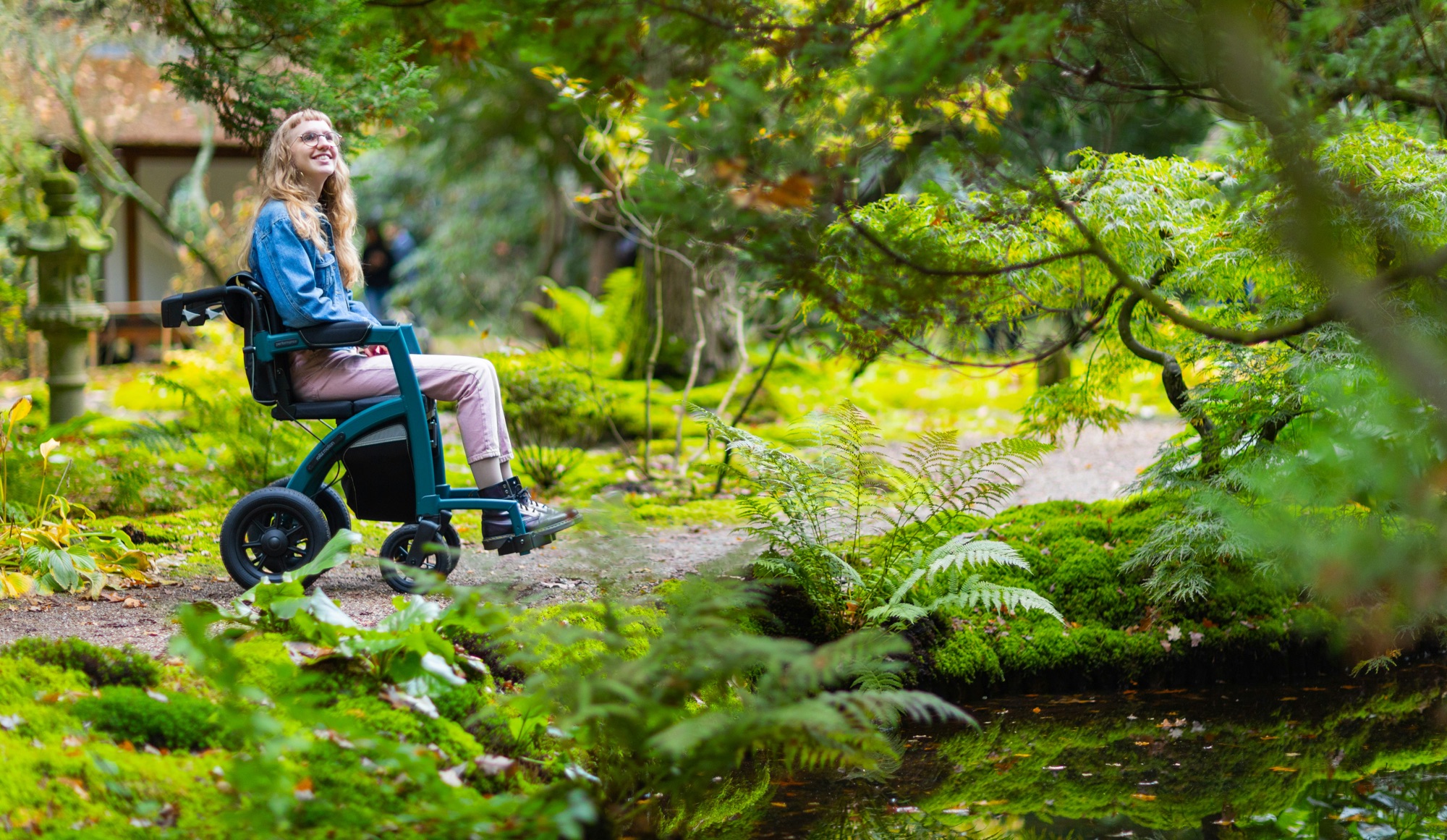Fine motor skills are essential for everyday tasks like writing, buttoning clothes, and holding utensils. For children with physical disabilities, developing these skills can be more challenging, but with the right support and techniques, they can build the strength and coordination needed for independence. Below are 12 tips and techniques designed to support fine motor skill development in children with physical disabilities. Incorporate Hand-Strengthening Exercises Strengthening the small muscles in the hands and fingers is a foundational step for improving fine motor skills. Activities such as squeezing stress balls, playing with theraputty, or using modeling clay can help increase hand strength. By engaging in repetitive hand movements like twisting, pinching, and squeezing, children can develop the necessary grip strength for tasks like holding a pencil or buttoning clothes. Encouraging consistent practice with these exercises is essential. Over time, the muscles will become stronger, making it easier for children to perform everyday tasks.
Practical Tips for Hand-Strengthening
- Therapy Putty Exercises: Divide the putty into small balls and ask the child to flatten them using their fingers. This not only strengthens fingers but also improves dexterity.
- Sponge Squeezing: Provide a bowl of water and a sponge. Have the child soak the sponge and then squeeze out the water. This repetitive action enhances hand strength and is simple to set up.
- Finger Tugs: Use rubber bands to create resistance. Loop a band around the fingers and thumb and ask the child to stretch the band by spreading their fingers. This helps in building independent finger strength.
Use Adaptive Tools and Assistive Devices
For children who struggle with grasping or manipulating objects, adaptive tools can make a world of difference. Tools such as built-up handles on utensils, adaptive scissors, or pencil grips can help improve a child’s ability to hold and control objects. These devices are designed to reduce the effort required, enabling children to complete tasks more independently. Other adaptive tools, such as Velcro fasteners on clothing or utensils with larger handles, also promote independence and reduce frustration. By making tasks more accessible, these tools can empower children to participate in everyday activities with greater confidence.
Choosing the Right Adaptive Tools
- Built-Up Utensils: When selecting utensils, look for those with larger, cushioned grips that are easier to hold. Brands like Good Grips offer a variety of options.
- Button Hooks and Zipper Pulls: These small tools can significantly ease the process of dressing, providing children with a sense of accomplishment and independence.
- Adaptive Scissors: These scissors have a spring mechanism that automatically reopens the blades after cutting, reducing the effort needed to use them.
Engage in Play-Based Therapy
Play-based therapy is an effective way to build fine motor skills while keeping children engaged and motivated. Activities like building with blocks, stacking cups, or playing with puzzles help improve hand-eye coordination and finger dexterity. Manipulating small toys or using materials like play dough engages the muscles in the hands while providing a fun and enjoyable experience. Incorporating play into therapy allows children to practice fine motor skills in a natural, low-pressure environment. This method often leads to better engagement and greater willingness to participate in therapy sessions.
Creative Play Ideas
- Block Building: Use different sizes and shapes of blocks to encourage creativity and precision. Challenge the child to build specific structures, enhancing both motor skills and problem-solving abilities.
- Puzzles with Pegs: Start with large, chunky puzzles and gradually move to more complex ones. Puzzles with pegs are ideal as they require precise finger movements.
- Pretend Play with Tools: Using toy tools like hammers and screwdrivers helps in developing fine motor control. Encourage children to fix imaginary items, promoting both skill and creativity.
Practice Grasp and Release Movements
Encouraging children to practice grasping and releasing objects is key to developing fine motor control. Activities like picking up small items (beads, buttons) with tongs, tweezers, or fingers help strengthen precision and control. Dropping these objects into containers or sorting them into different groups can improve dexterity. These activities can be adapted to suit the child’s abilities, starting with larger objects and gradually transitioning to smaller items as their skills improve. Grasp-and-release movements are fundamental for tasks like writing and picking up utensils.
Step-by-Step Grasp and Release Activities
- Pom-Pom Pickup: Use tweezers to pick up pom-poms and transfer them into a container. This can be turned into a game by timing the activity or sorting by color.
- Coin Sorting: Provide a range of coins and ask the child to sort them into different jars. This not only improves fine motor skills but also introduces basic math concepts.
- Bead Transfer: Using a spoon, transfer beads from one bowl to another. Gradually increase the challenge by using smaller beads or a narrower spoon.
Work on Bilateral Coordination
Bilateral coordination, or the ability to use both hands together, is important for tasks like tying shoes or cutting with scissors. Activities that require two-handed movements, such as threading beads onto a string, tearing paper, or pulling apart objects, strengthen coordination between the hands. Encouraging children to use both hands simultaneously enhances their ability to perform tasks that require precision and synchronization, such as zipping a jacket or buttoning a shirt.
Enhancing Bilateral Coordination
- Threading Activities: Use large beads and a shoelace to practice threading. As the child’s skill improves, introduce smaller beads for added challenge.
- Tearing and Crumpling Paper: These simple activities engage both hands and can be used to create art projects, making the exercise fun and purposeful.
- Cooking Together: Involve children in kitchen tasks like kneading dough or mixing ingredients, which require the use of both hands and offer a sensory experience.
Incorporate Sensory Activities
Sensory activities that engage a child’s sense of touch and proprioception can enhance fine motor development. Playing with sensory materials like sand, slime, or water provides tactile feedback and helps children become more aware of their hand movements. These activities also improve fine motor control by requiring children to manipulate objects with varying textures and resistance. Sensory play not only strengthens the muscles in the hands but also stimulates the brain, promoting better awareness and coordination of hand movements.
Sensory Activities for Skill Development
- Sand Writing: Use a tray filled with sand to practice writing letters or numbers. This activity combines sensory feedback with fine motor practice.
- Slime Play: Encourage squeezing, stretching, and rolling slime. This can be both calming and strengthening for the hands.
- Water Play with Toys: Use small toys in water to practice scooping, pouring, and transferring, which engages multiple senses and motor skills.
Focus on Hand-Eye Coordination
Developing hand-eye coordination is essential for tasks such as writing, drawing, and using utensils. Activities like catching and throwing a ball, threading needles, or tracing lines with a pencil can help improve this skill. Practicing tasks that involve coordination between vision and hand movements lays the foundation for more complex fine motor tasks. Simple activities like coloring within the lines or playing games that require accuracy and precision are fun ways to build hand-eye coordination while improving overall dexterity.
Games and Activities for Hand-Eye Coordination
- Ball Games: Start with larger balls and gradually move to smaller ones. Activities like rolling, catching, or bouncing a ball against a wall can significantly improve coordination.
- Tracing and Dot-to-Dot: Use tracing paper or dot-to-dot puzzles to enhance precision. This activity can be tailored to the child’s interests, making it more engaging.
- Video Game Controllers: Certain video games require precise hand movements and can be a fun way to improve coordination, though moderation is key.
Encourage Self-Care Tasks
Self-care tasks, such as buttoning, zipping, and dressing, are practical ways to promote fine motor skill development. While these tasks may be difficult initially, they provide valuable opportunities for children to practice their skills in a meaningful context. Start with easier tasks and gradually introduce more complex ones as the child gains confidence. Encouraging independence in these tasks helps build not only motor skills but also self-esteem. Using adaptive clothing with larger buttons or Velcro can make the process easier and more manageable.
Steps to Foster Independence in Self-Care
- Start Simple: Begin with tasks like pulling up pants or slipping on shoes before advancing to more complex activities like tying laces.
- Use Visual Aids: Create step-by-step visual guides for tasks like hand washing or dressing to provide children with clear instructions.
- Routine Practice: Incorporate self-care tasks into daily routines, allowing children to practice regularly in a structured setting.
Engage in Arts and Crafts
Arts and crafts are highly effective for developing fine motor skills. Activities such as cutting with scissors, gluing small pieces, coloring, or painting all require precise hand movements. These creative projects also stimulate imagination and problem-solving while improving dexterity and coordination. Incorporating art projects into therapy can be a fun and relaxing way to help children develop important skills while expressing themselves creatively. Projects like stringing beads or creating collages can be both therapeutic and rewarding.
Craft Ideas to Develop Fine Motor Skills
- Collage Making: Provide a variety of materials like fabric, paper, and stickers for children to create collages. This activity encourages cutting, gluing, and arranging.
- Painting with Different Tools: Use brushes, sponges, or even fingers to paint. Different tools require different grips and movements, enhancing versatility.
- Origami: Folding paper into shapes is a precise activity that improves fine motor skills and requires focus and concentration.
Break Tasks into Smaller Steps
Breaking down complex tasks into smaller, more manageable steps can make them less overwhelming for children with physical disabilities. For example, when teaching a child to tie their shoes, start with practicing just the initial loop before moving on to the entire process. Breaking tasks into smaller components allows children to master one step at a time. This approach reduces frustration and helps children build confidence in their abilities. As they progress through each step, they gain the skills needed to complete the full task independently.
Strategies for Task Simplification
- Chunking Tasks: Divide tasks into manageable parts, such as focusing on pulling up socks before tackling shoes.
- Step-by-Step Guidance: Use verbal or visual cues to guide the child through each step, gradually reducing assistance as they become more confident.
- Frequent Breaks: Allow breaks between steps to prevent fatigue and maintain motivation, especially with longer or more complex activities.
Incorporate Technology and Apps
Technology can be a powerful tool for fine motor development. Many apps and games are specifically designed to improve finger strength, hand-eye coordination, and fine motor control through interactive exercises. Touchscreen activities like tapping, dragging, or tracing can help children improve their precision and dexterity while making therapy engaging and fun. Moderating screen time while using educational apps can provide additional practice in a more entertaining format, keeping children motivated and interested in their progress.
Recommended Apps for Fine Motor Skills
- Dexteria: This app offers a series of hand and finger exercises designed to improve fine motor skills and hand-eye coordination.
- Splingo’s Language Universe: While primarily focused on language, this app also includes activities that require fine motor control and precision.
- Drawing Pad: Encourage creativity while practicing drawing and tracing, helping to develop both artistic skills and hand precision.
Provide Positive Reinforcement
Offering positive reinforcement and encouragement is essential for keeping children motivated, especially when they face challenges with fine motor tasks. Celebrate small successes, and provide praise for effort rather than just results. Reinforcement can come in many forms, such as verbal praise, stickers, or other small rewards. By focusing on progress and effort, children are more likely to stay engaged and continue working toward their fine motor goals. Building their confidence through positive reinforcement will help them develop resilience and perseverance in the face of challenges.
Techniques for Effective Reinforcement
- Use a Reward System: Implement a system where children earn points or stickers for effort and achievements, which can be exchanged for a reward.
- Provide Immediate Feedback: Offer praise or constructive feedback immediately after a task to reinforce learning and motivation.
- Celebrate Milestones: Mark significant achievements with a small celebration or special activity to acknowledge progress and effort.




